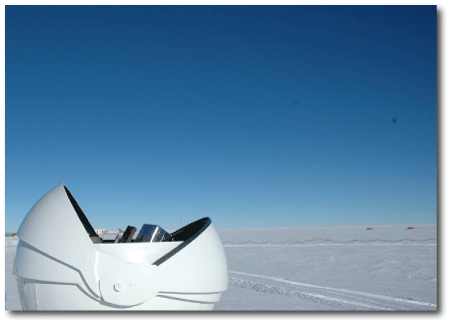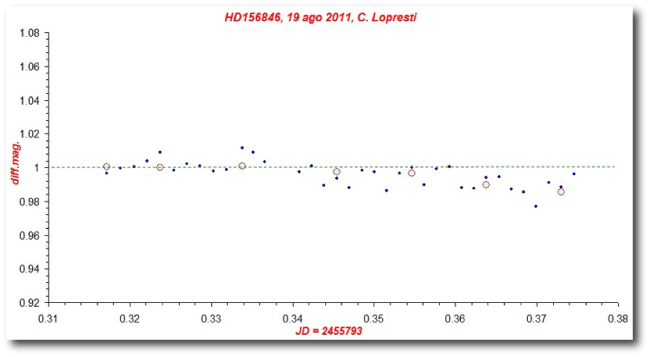
Image: ASTEP Telescope — Yan Fantei-Caujolle (2009)
Ready or not, HD 156846b, is less than a day away from its much-awaited periastron passage and transit opportunity. Let’s have a show of hands: If it’s dark, if the star is up (RA 17 20, Dec -19 20), and if you’re capable of 1% photometry, then you should be out there on the sky!
Mauro Barbieri, who led the HD 17156b transit discovery back in 2007, has been working very hard behind the scenes to orchestrate observing campaigns in various spots around the globe. This morning, he sent me three nights of baseline photometry from Claudio Lopresti, who has been observing from Italy. These baseline observations show how the increasing air-mass will likely lead to a downward drift in the light curve near the end of tonight’s observing session. If the best-fit prediction turns out to be correct (and assuming, of course, that the planet defies the geometric odds and actually occults the star) then it will be tough to convincingly bag the transit from southern Europe. The party, however, could easily start early…
Observatories in South America have a better chance. For example, at La Silla, there are ~6 hours during the 1-sigma transit window when it is both dark and when the star is at an air mass of less than two. Unfortunately, however, at the moment, the weather forecast for La Silla does not look good. The forecast at Cerro Paranal, however, is excellent.
The most exotic photometry is on tap from Dome C at elevation 3233M in Antarctica, where, barring clouds, rain or snow, the ASTEPS telescope is scheduled to observe. According to the Weather Underground, conditions at Dome C are currently overcast, calm and -88F. (“Feels like -88F”)



